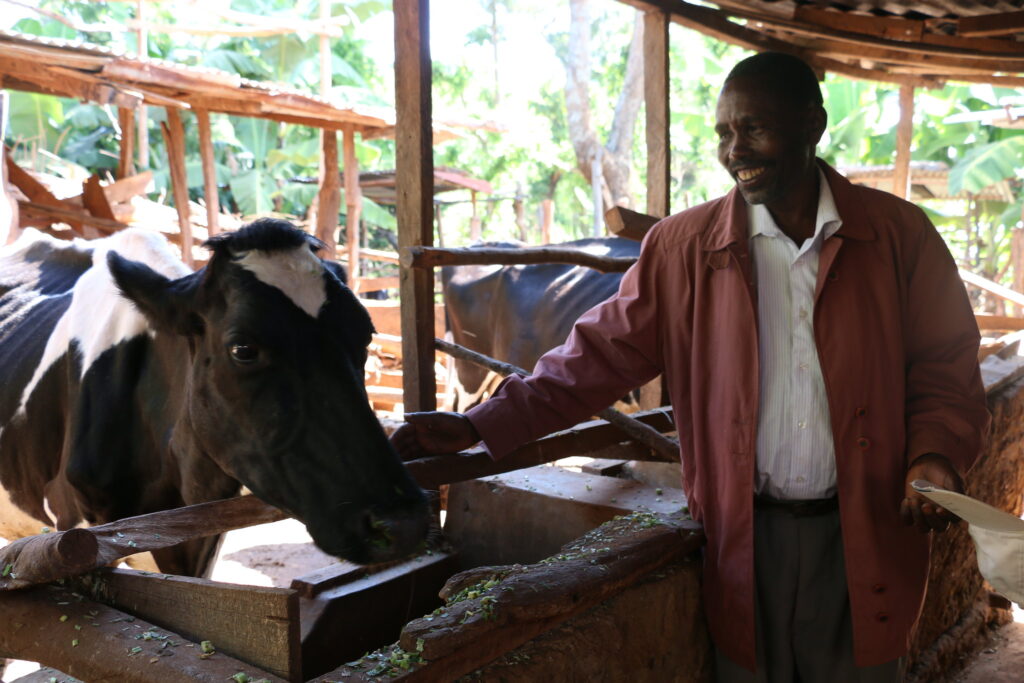Get the latest updates and learn more about Agribusiness in Africa.

20th February 24
Financing smallholder farmers: what remains to be done?
By Charlotte Ochieng, Senior Agri-business Finance Consultant at Agri Frontier.
Smallholder farmers are often viewed as high-risk clients by formal financial institutions due to the diverse nature of their credit needs, the complexity of their operations, and the relatively small-scale nature of their businesses. Consequently, these financial service providers may perceive serving smallholder farmers as yielding low returns given the transactional costs associated with providing services to them. Informal finance, therefore, becomes the next best alternative for smallholder farmers. Nonetheless, it is a widely acknowledged truth that predatory lending practices exhibited by informal service providers are inflicting more harm than benefit to the smallholder farmers. Further, it has been established that smallholder farmers in Africa, Asia and Latin America face an approximate $170 billion funding gap. While the support of the Development Finance Institutions (DFIs) and other development practitioners is not in doubt, it is evident that more needs to be done to address the credit challenges faced by smallholder farmers.
The problem
What remains to be done? To comprehensively answer this question, it is imperative to wear the lens of the smallholder farmer, and view the “world” from his or her perspective. Wafubwa, is a smallholder farmer based in Kitale, an agricultural town in the western region of Kenya. He relies on the proceeds from his dairy farm to fend for his household and to secure his financial freedom. On account of the recent upheaval occasioned by COVID-19, Wafubwa suffered severe loss on his farming income. Amid the lockdown restrictions, he suspended milk deliveries to schools and hotels within his neighborhood. What’s worse? Some of his cows fell ill, and a veterinarian could not get to his farm in good time to treat them. Sadly, two of his dairy cows succumbed to the illness.

Photo credit: Irene Angwenyi/USAID Kenya
Granted, one may argue that this was a one-time occurrence due to the uniqueness of the unprecedented challenges posed by the pandemic across the globe. However, could this occurrence portray a potential lack of resilience and adaptability to manage disruptions caused by natural occurrences, such as the pandemic and by extension, climate change? Moreover, what about the price fixing challenges that Wafubwa endures weekly at the local dairy farmers association? Additionally, the absence of proper infrastructure for milk storage and appropriate transportation presents him with significant hurdles. The high cost of animal feeds and low financial literacy further compounds his economic strain. Additionally, Wafubwa lacks the knowledge needed to add value to his milk and subsequently increase his income. While access to affordable financing is central to reshaping Wafubwa’s narrative, he has not been successful in securing a credit facility from his local bank.
What can be done?
Vividly, the factors above raise critical questions about the broader support and resources that can be availed to smallholder farmers like Wafubwa, particularly in navigating the complexities of agricultural markets, financing and enhancing their resilience to various challenges. Firstly, it is important to acknowledge that the funding gap exists as both a demand-side and supply-side issue. The demand side issues as presented in the case of Wafubwa, stifle the growth and productivity of smallholder farmers, thus affecting their income and cashflows to service bank loans. Conversely, designing suitable financial products and appraising loans for smallholder farmers requires specialized agricultural knowledge that most banks lack or experience difficultly to obtain. A study by Mastercard Foundation and ISF Advisors established that commercial banks provide just 3% of financial services currently available to smallholder farmers. This potentially highlights a fundamental concern; the margins and gains banks derive from extending credit to smallholder farmers may not outweigh the associated risks and transactional costs. Additionally, the absence of traditional collateral completes the picture as to why most local banks refrain from lending to smallholder farmers.

Secondly, in order to address both the demand-side and supply-side obstacles, development practioners may consider designing and implementing innovative financing solutions and bundled services as a strategy to lend cost effectively (for banks) and provide affordable financing to smallholder farmers. Adding advisory services, market information, agricultural inputs and business development support services to the traditional financing services offering is one way to meet this strategy. Another way is to create an independent integrated platform that functions as a market place, a networking zone, a learning hub and a bank. Essentially, technology would play a huge role as the delivery platform of theses integrated services.
So how would this work? Imagine Wafubwa logging onto a social platform to interact with other farmers across different value chains, exchanging ideas and sharing best practices with his peers. As he connecting with his peers, he clicks on the learning module to upskill on cashflow management and good agricultural practices. While on the platform, Wafubwa can also close on a sale virtually, since the platform allows him to advertise and sell his produce to potential buyers. Meanwhile, in the background, the credit algorithm inbuilt onto the platform scores him as he learns and engages on commercial transactions. Upon his initiation for a loan request, the banks onboarded on the platform make him credit offers on the strength his application and the inbuilt credit score. The platform also provides basic accounting templates (balance sheet, income statement and cashflow statement) and other trade documents such as invoices, delivery notes and purchase orders. This further eliminates the risk of lack of proper documentation, as the onboarded banks can access financial statements and sight trading records from the trading activity undertaken on the platform.
By gaining access to advisory support, market information, financial knowledge and networking opportunities, Wafubwa and other smallholder farmers will inch closer to narrowing the funding gap. On the other hand, by leveraging on the integrated technology platform, the banks will reduce the transactional costs and associated risks that arise when lending to a smallholder farmer.
Featured photo credit: by CNFA
